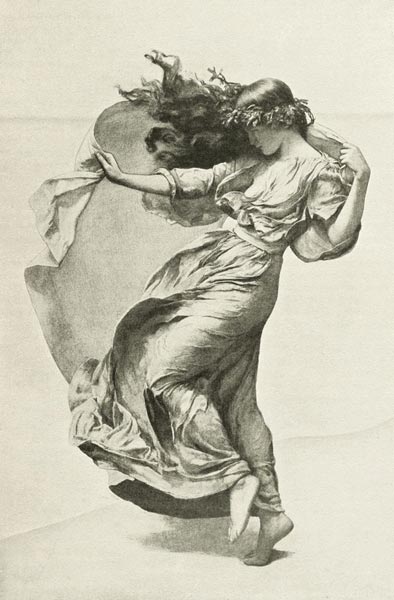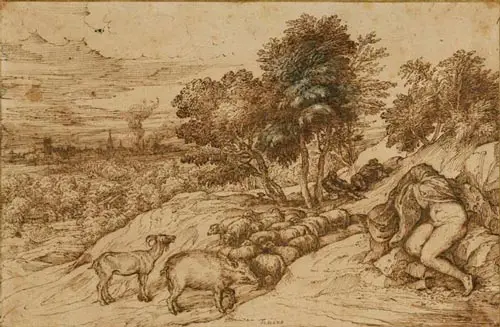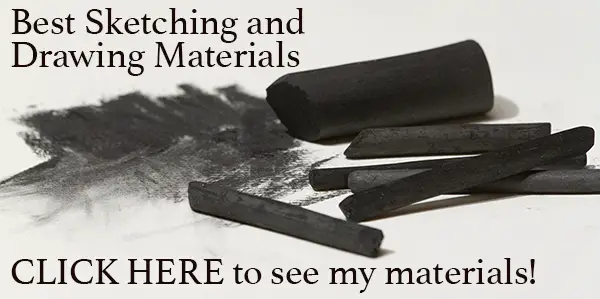
10 Subjects to Improve Your Drawing Skills
If you want to learn how to get better at drawing as quickly as possible, you need to focus on subjects and methods that will challenge your artistic growth. Below we will look at 10 subjects to improve your drawing skills.
Learn to Draw the Human Figure
This is probably the most time-tested process for improving your drawing. For centuries masters would have apprentices draw the human figure both by copying other masterworks and from life. Think of Michelangelo, da Vinci, or any of the other Renaissance Masters. They are known for their great figurative work. More recent masters like John Singer Sargent and William Bouguereau also displayed unsurpassed draftsmanship.
The human figure has always shown to be one of the best, if not the best way to master organic forms, subtle curvature, and complex organic structure.
Not only is the human figure one of the most complex and subtle of all organic forms, but the fact that we humans are so prone to human recognition makes it almost impossible to slack off on drawing other people. If you move a branch down an inch on a tree, it's no big deal; if you move a person's nose down an inch, it's a very big deal. The human figure demands precision, especially if you are trying to capture a likeness.
There are many great resources for learning how to draw the human figure. One of the best, in my opinion, is the Charles Bargue and Jean-Leon Gerome: Drawing Course. This is a classical drawing course that was developed in the 19th century. See a more detailed review on my post Books That Changed My Artistic Life.
On top of doing the master copies that the Bargue Drawing Course offers, you will want to draw the human figure from life. Drawing nudes has always been preferred because you learn so much, not only about human anatomy but also about curvature, form, and how light affects form. Some art associations or classes offer nude modeling. If this is not possible, then drawing the clothed figure is the next best thing.

See the types of pencils, charcoal, and paper I use on the Drawing and Sketching Resources Page.
Learn to Draw Drapery
Even if you never plan to draw drapery or the clothed human figure, drawing drapery is highly recommended because, like the human figure, it teaches you so much about the subtlety of form and lighting. While it doesn't possess the challenge of trying to capture a human likeness, some of the most complex lighting and form situations can be found in drapery.
Drapery was also studied in-depth by the all the masters prior to the advent of modern art. They used its organic flow extensively for directional movement and compositional purposes in their art. This is something we rarely see in contemporary work.




The great thing about drapery is that you can set up it and it won't move or need a bathroom break like a human model. Taking a white sheet and hanging it over a couple of hooks on a wall with some dramatic lighting can provide hours or exceptional study in lighting and form.




Learn Linear Perspective
Every form is in perspective, meaning all form has a depth which follows the rules of perspective. Even when drawing the human figure standing straight up, if your eyes are level with the model's head, the feet will appear to sharply angle toward the vanishing point on the horizon line which is level with your eyes.
The rules of perspective will apply to anything you want to draw in a realistic manner, though some to a greater degree than others. If you are drawing a country landscape the rules still apply, but they do not have as obvious an effect as they do on a city scene with buildings and streets.
Knowing these rules, or at least being cognitive of them when drawing will greatly improve your results. When I draw, I don't draw a bunch of lines going to a vanishing point. I just try to draw everything the correct angle and size, which will give you the same effect. However, there are times when I'm drawing something where I need to refer to these rules to help solve problems like foreshortening and depth.
There are many great resources, books, and even YouTube videos that can help you learn these principles. Learning this stuff is not as fun or romantic as other forms of drawing, but you cannot escape them. No matter what you do or try to master, there are always parts of it that are not as exciting, or even downright boring, but once mastered they are indispensable. This is how perspective was for me. Learn it, you won't be sorry.




Draw Landscapes
Drawing landscapes can help you learn to draw organic forms and arrange those forms into a pleasing composition. Start out by just drawing one tree or some clouds, then build upon that by drawing a whole landscape. Once you've got a handle on that, try arranging the elements to make a pleasing composition. Don't be afraid to eliminate things or even add things to make a nice picture.
Learn to Draw Architecture
The art I do today has nothing to do with modern cityscapes, yet drawing cityscapes and buildings not only helped me win awards like Best Architectural Painting at Plein Air Easton, it also helped me to paint barns well, and apply perspective to my Native American scenes. If you want to test your perspective skills, this is the way to go. Once again, start off with just one building or a house, the move onto full city scapes or interiors.
Draw Mechanical Objects
I've done crazy things like monochromatic watercolor drawings of plumbing in really old buildings, marking sure to paint every bolt and pipe accurately, which was in perspective of course. I didn't do this because it excited me; I did it because I knew it was a weakness of mine and drawing it would help me improve my focus and patience.




Draw from Life to Improve
I can't emphasize enough to draw from life. Photos are a great source of reference, but they are not life. Even if you end up drawing or painting mostly from photos, drawing and painting from life will help you put life into a lifeless photo.
Photos also distort things and cause foreshortening issues. I've seen many paintings where the artist just copied the photo, not realizing that the reason the horse's head looks so big is not that it was that big in life, but because of the foreshortening problems in the photo.
Draw from life as much as possible, you won't be sorry.
Copy Master Drawings
This was touched on above, but I wanted to point out that this is a great way to improve your drawing skills. Copying another artist's work can help you get inside their head. Many masters made it a lifetime practice. In fact, that is one of the reasons why museums were initially built, and many still allow it, provided the work is in public domain.
A word on copyright. You can copy any artist's work as much as you want, but only for practice. Baring permission or works in the public domain, you cannot in any way publish (even on social media), market, or sell that work in any way without breaking copyright laws and risking a lawsuit. I've copied the work of deceased and living artists, but I never publish or sell it. It usually ends up either in the trash. If you copy, use it for a private learning experience and nothing more.




Practice Drawing Techniques and Exercises
Whether it's contour drawing, gesture drawing, or memory drawing, practicing different techniques can, along with the right subject matter, improve your drawing skills. I cover this more in-depth in my article Sketching Exercises To Help Beginners Learn and Pros Improve.
Practice Focus and Patience While Drawing
I touched on this above, but focus and patience are two of the most important things you can develop to improve your drawing, and these come from challenging yourself, and lots of practice.
There is nothing physical about drawing beyond holding a pencil. You don't need to condition your muscles like an athlete or even as a musician would. So any problems you may have with drawing are most likely mental. Learning focus and patience will help you achieve the knowledge and experience you need to make you a better artist.
I hope that helps. Please leave your questions or comments below on what your experiences have been on learning to draw and sketch.
Keep Drawing!
Jason Tako is a nationally known fine artist who specializes in western, wildlife, plein air, and Historical Native American subject matter. He spent his learning years sketching the wetlands and wooded areas of rural Minnesota. He has been featured in Plein Air Magazine and Western Art Collector Magazine and he was the Featured Artist for the 2020 Southeastern Wildlife Expo. See his work at www.JasonTako.com and his demonstrations on his YouTube Channel.
Warning: Undefined array key "preview" in /home3/mysketc2/public_html/wp-content/plugins/oxygen/component-framework/components/classes/comment-form.class.php on line 75


Warning: Undefined array key "preview" in /home3/mysketc2/public_html/wp-content/plugins/oxygen/component-framework/components/classes/comment-form.class.php on line 79